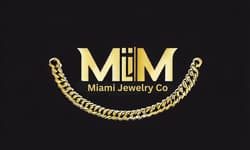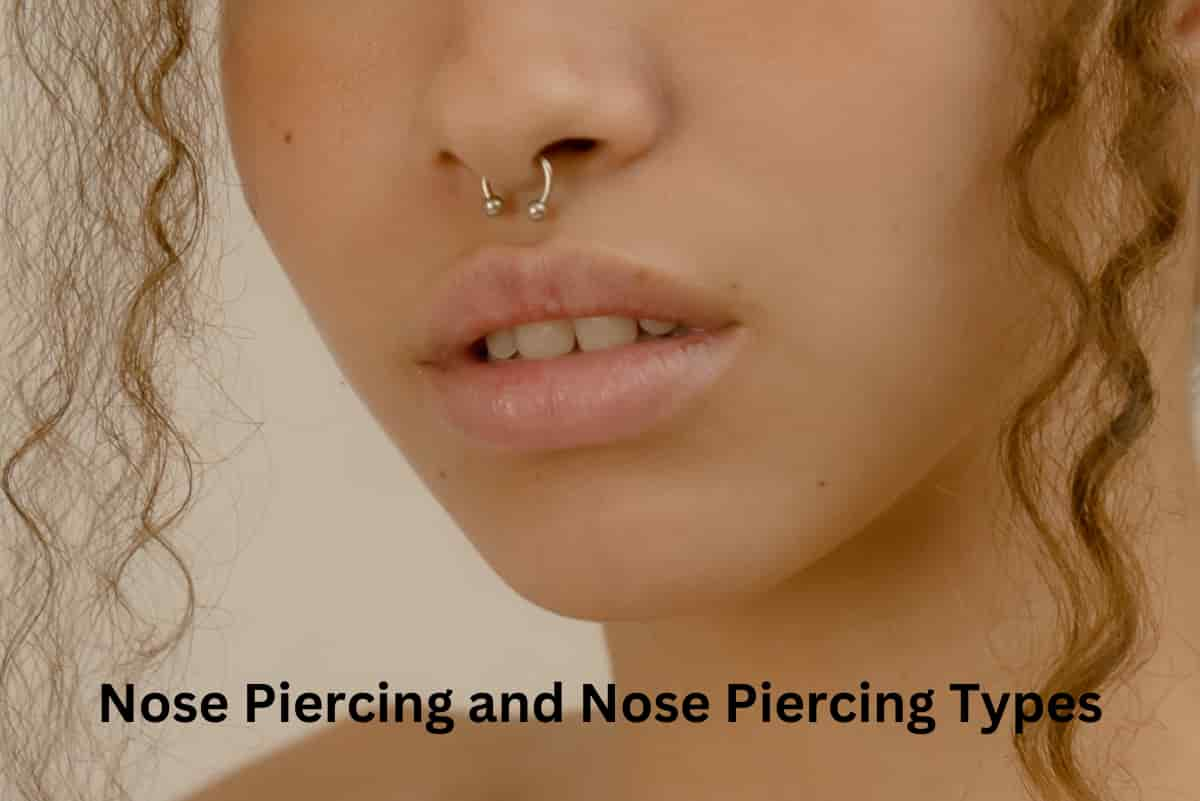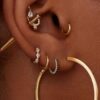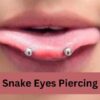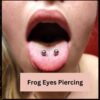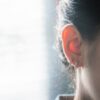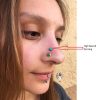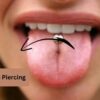Nose Piercing
Nostril Piercings and Nose Piercing Types: Everything You Need to Know
You’ve seen nose piercings everywhere, right?
From famous people to your friends, and even strangers. You’re thinking, “I want one too!” But it’s not just about saying yes to a nose piercing. The tricky part comes next.
What type of nose piercing do you want?
How long does it take to heal?
Does it hurt a lot?
What about taking care of your piercing? And when you look for answers, the internet confuses you even more. There’s so much information, and a lot of it doesn’t match up.
This is where the wise words of Dr. Julia Tzu, a renowned dermatologist quoted on MedicalNewsToday, come in handy. She stresses, “Proper sterilization procedures and post-piercing care are crucial to prevent bacterial infection.” This statement is at the heart of why I wrote this guide. As a professional, I agree with her. We need to give clear, right, and helpful advice.
You step into a piercing shop. The people there use words you’ve never heard before. ‘High nostril’, ‘standard nostril’, ‘bridge piercing’, ‘septum’, ‘bull-ring’. You feel lost. Which one is right for you?
That’s where this guide comes in. It will help you understand everything about nose piercings. It will talk about different types and how to choose one that’s best for you. It will tell you about healing and how to take care of your new piercing.
By the end of this guide, you’ll be ready. You’ll know what to expect. You’ll be able to make the right choice for you. You’ll walk out of the piercing shop happy and confident. So, let’s start turning that confusion into clarity, together!
Contents
- 1 Nose Piercings in History
- 2 Common Myths About Nose Piercing
- 3 Types of Nose Piercings and Their Variations
- 4 Nose Piercing Video Guide
- 5 Nose Piercing Pain:
- 6 Comparing Nose Piercings with Other Piercings
- 7 The Potential Complications and Risks
- 8 The Cost of Nose Piercing
- 9 The Healing Process
- 10 Aftercare of Nose Piercings
- 11 What Jewelry Material Is Used for a Nose Piercing?
- 12 What Type of Jewelry Is Used for a Nose Piercing?
- 13 Pros and Cons of Nose Piercings
- 14 FAQs
- 15 Conclusion
Nose Piercings in History
Nose piercings have been around for thousands of years. The first ones we know about were in the Middle East around 4,000 years ago. They weren’t just for looks. They had cultural, religious, and even money meanings in different societies. For example, in some cultures, a nose ring showed a woman was married. Or it might be a gift from a husband to his wife for her safety.
Now, people all over the world get nose piercings. They’re a popular way to express yourself and show off your style.
Common Myths About Nose Piercing
There are lots of myths about nose piercings that can make people worry. Some think that nose piercings hurt a lot, take a long time to heal, or stop you from getting a job. But the pain and healing time can be different for everyone, and most people think nose piercings are okay. Plus, more and more workplaces are fine with body modifications.
Types of Nose Piercings and Their Variations
There’s an array of nose piercings to choose from, each offering a unique aesthetic appeal. Let’s delve into some of the popular types and their variations.
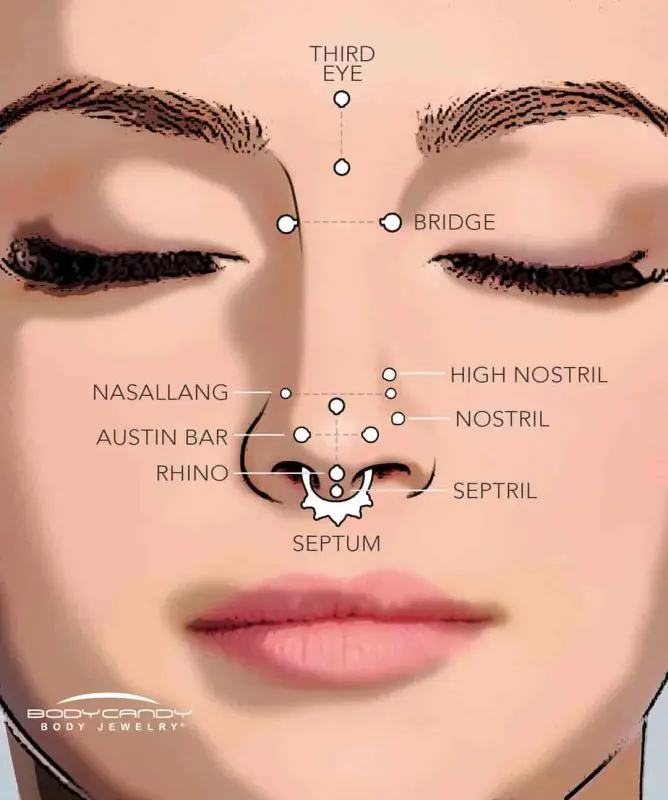
Nostril Piercing
The most common type of nose piercing is the nostril piercing, typically placed in the crease line of the nostril. You can choose either the left or the right side depending on your preference.
- Read here: Find Perfect Nose Piercing Placement
Variations and Styling Guide
For a unique twist, consider a double nostril piercing where two piercings are done on the same side. This style offers a bold look and more space to play around with different jewelry pieces. A simple stud, hoop, or even a diamond can make your nostril piercing stand out.
Septum Piercing
The septum piercing, often known as the “bull ring” piercing, goes through the thin strip of tissue separating your nostrils.
Variations and Styling Guide
A double septum piercing or a combination of a septum and nostril piercing can create a distinctive look. You can choose from jewelry styles such as circular barbells, captive bead rings, or septum clickers, each offering a unique appeal.
- Compare: Septum vs Nostril Piercings

High Nostril Piercing
A high nostril piercing is done higher up on the nose than traditional nostril piercings, closer to the bridge of the nose.
Variations and Styling Guide
A single or double high nostril piercing paired with small studs can create a minimalistic yet striking aesthetic. This piercing might not accommodate larger pieces of jewelry due to its location but shines in its subtlety.

Nasallang Piercing
The nasallang piercing is an intense form that involves piercing both nostrils and the septum in one straight line, using a single piece of jewelry.
Variations and Styling Guide
As a unique and less common choice, a nasallang piercing itself is quite a statement. Industrial barbells are typically used for this piercing, making it an edgy choice for body modification enthusiasts.
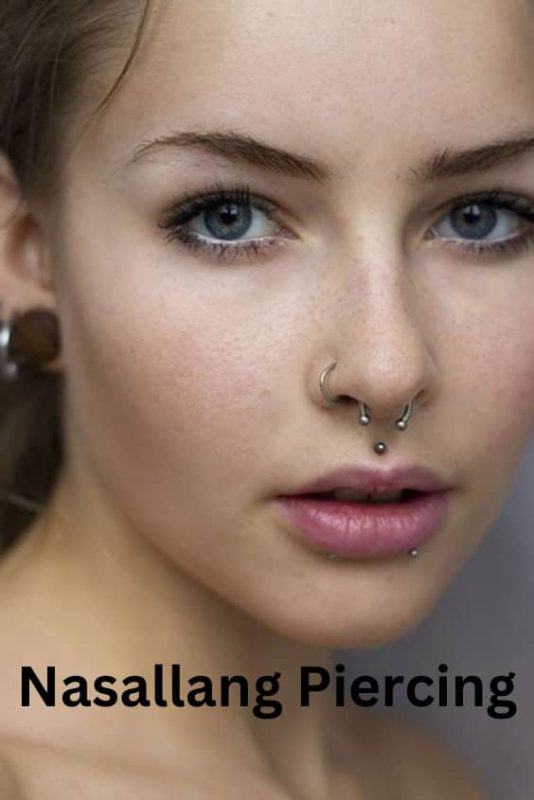
Mantis Piercing
The mantis piercing is a rare and unique type of nose piercing that involves a horizontal perforation of the tip of the nose. This piercing can take a bit longer to heal due to its unusual location, often taking 3-4 months. It’s important to note that not all nose shapes can accommodate a mantis piercing.
Mantis Piercing Variations and Styling Guide
Mantis piercings can be styled with a straight or curved barbell. The jewelry’s end can feature gems or beads for added decoration. Because this is an uncommon piercing, it’s a great choice for those wanting to make a bold statement.
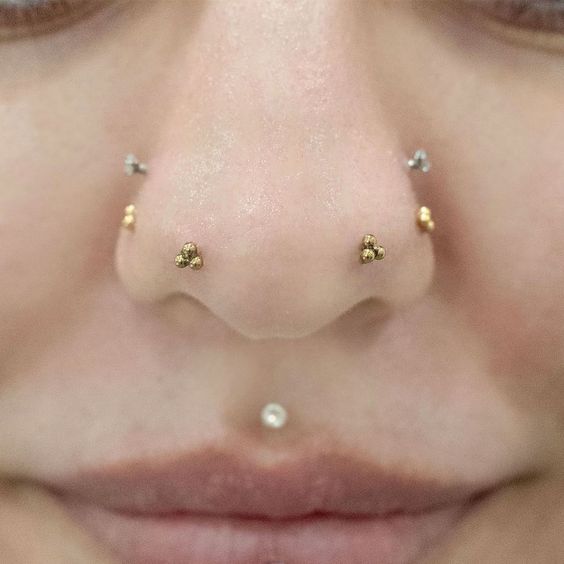
Austin Bar Piercing
The Austin bar piercing is a vertical industrial piercing that goes through both nostrils and the septum. It requires precision and skill from the piercer, as the angles need to be perfect to avoid discomfort or potential complications.
Austin Bar Piercing Variations and Styling Guide
Due to the nature of this piercing, it’s usually adorned with a straight barbell. The bar’s visible ends can be simple or decorative, depending on your personal style.
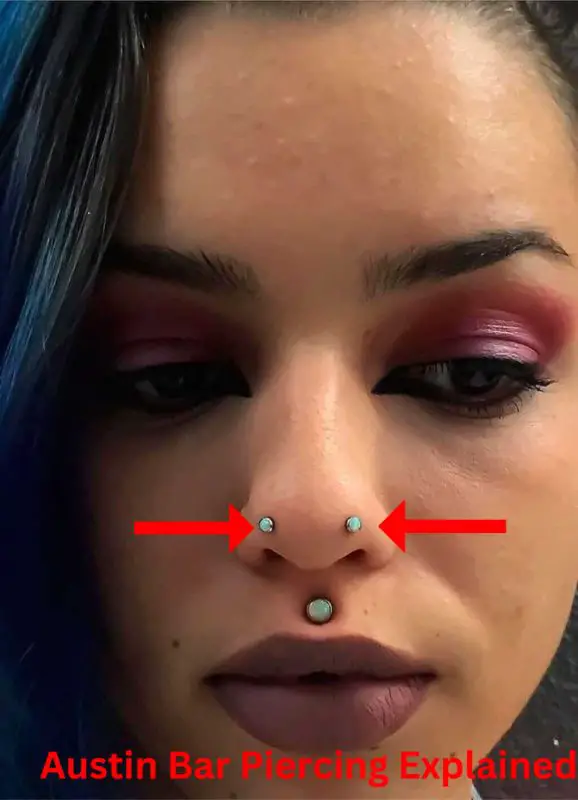
Rhino Piercing
A rhino piercing, also known as a vertical tip or vertical nose piercing, goes vertically through the tip of the nose, with one end visible at the base of the nose and the other at the tip. Healing time for this piercing can range from 6-9 months.
Rhino Piercing Variations and Styling Guide
A curved barbell is the jewelry of choice for a rhino piercing, allowing the ends to sit comfortably at the piercing’s entry and exit points.
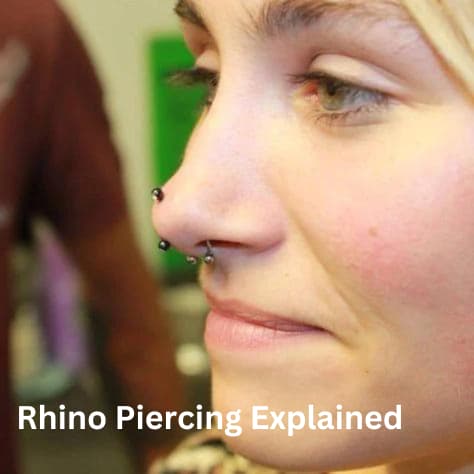
Bridge Piercing
A nose bridge piercing, also known as an Erl or third eye piercing, is not technically a nose piercing but is grouped with them due to its location. This piercing is done horizontally through the skin at the bridge of the nose. It has a relatively quick healing time of 8-10 weeks.
Nose Bridge Piercing Variations and Styling Guide
A straight barbell is typically worn in bridge piercings. Different end pieces can change up the look, from simple balls to spikes or gemstones.
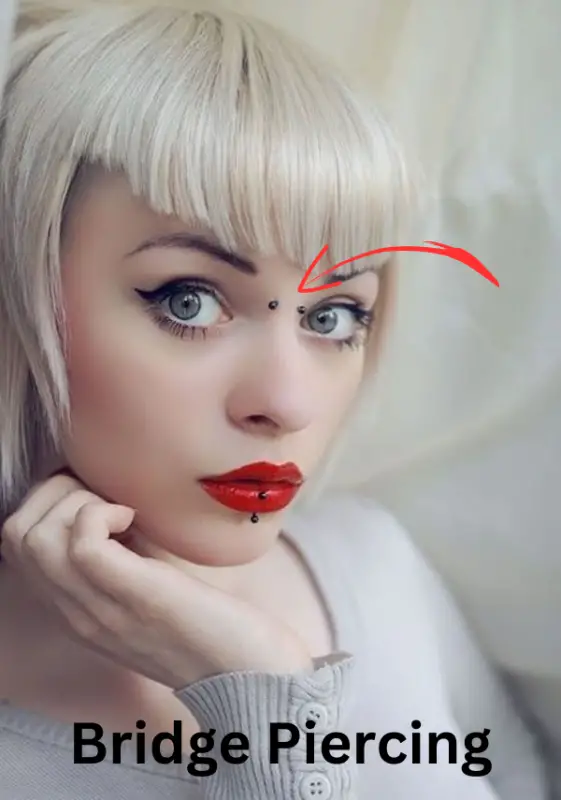
The Piercing Process
Understanding the piercing process can help you prepare for your appointment.
Consultation
During the consultation, your piercer will discuss your desired piercing location and jewelry type. They’ll also assess your nose shape and give you an idea of what to expect during and after the procedure.
Piercing Procedure
Using a sterile needle, they’ll make a quick puncture, followed by the insertion of your chosen piece of jewelry.
Aftercare Advice
Finally, you’ll be provided with important aftercare instructions to ensure a healthy healing process.
Nose Piercing Video Guide
Nose Piercing Pain:
When it comes to body modifications, one of the most common questions people ask is about the level of pain involved. It’s important to remember that pain is a subjective experience and varies significantly from person to person. However, certain types of piercings are generally associated with more discomfort than others.
Here’s a comparative analysis of the pain scales associated with various types of nose piercings:
| Nose Piercing Type | Pain Scale (1-10) |
|---|---|
| Nostril Piercing | 3-4 |
| Septum Piercing | 4-5 |
| High Nostril Piercing | 5-6 |
| Nasallang Piercing | 7-8 |
| Mantis Piercing | 8-9 |
| Austin Bar Piercing | 8-9 |
| Rhino Piercing | 9-10 |
| Nose Bridge Piercing | 7-8 |
- Check out: Ear Piercing Chart
Comparing Nose Piercings with Other Piercings
When compared to other types of body piercings, nose piercings hold a unique appeal. Ear piercings, for instance, are seen as more conventional, while tongue or navel piercings are often seen as more adventurous. A nose piercing strikes a balance, acting as a focal point of the face without being overly dramatic.
Each piercing type has its own healing times, pain levels, and care procedures. Nose piercings generally heal faster than cartilage piercings like those on the ear, and many find them less painful than lip or tongue piercings.
The Potential Complications and Risks
Like all forms of body modification, nose piercings do come with potential risks and complications. Awareness of these can help you take preventative measures.
Pain and Discomfort
The level of pain experienced during a nose piercing varies from person to person, depending on their pain tolerance. Most describe it as a sharp pinch followed by a dull ache. Some discomfort and swelling are normal in the days following the piercing but should subside as the healing process continues.
Health Risks
While professional piercers take all possible precautions to minimize risks, potential health complications can include infection, allergic reactions to jewelry materials, and the development of a “piercing bump” or keloid. If you follow proper aftercare instructions, these risks are significantly reduced.
The Cost of Nose Piercing
The cost of a nose piercing can vary widely depending on the location, the experience of the piercer, and the type of jewelry you choose. On average, you can expect to pay anywhere from $30 to $80. High-end jewelry or more complicated piercing types may increase this cost.
| Nose Piercing Type | Approximate Cost (USD) |
|---|---|
| Nostril Piercing | $30-$80 |
| Septum Piercing | $40-$90 |
| High Nostril Piercing | $40-$90 |
| Nasallang Piercing | $60-$120 |
| Mantis Piercing | $70-$130 |
| Austin Bar Piercing | $70-$130 |
| Rhino Piercing | $70-$130 |
| Nose Bridge Piercing | $50-$100 |
The Healing Process
Understanding the healing process and how to care for your new piercing is crucial.
Healing Time
Healing times vary depending on the type of nose piercing and your personal health. On average, nostril piercings take 2-4 months to heal fully, while septum piercings might heal in 6-8 weeks.
Nostril Piercing
A nostril piercing generally takes 2-4 months to fully heal. During this time, it’s crucial to avoid changing or removing the jewelry.
Septum Piercing
A septum piercing tends to heal faster than a nostril piercing, with an average healing time of 6-8 weeks. Despite this faster healing time, proper aftercare is still essential.
High Nostril Piercing
A high nostril piercing might take a bit longer to heal fully, with average healing times between 3-6 months. Because of its location, this piercing requires careful attention to keep it clean and irritation-free.
Nasallang Piercing
As the most complex nose piercing, a nasallang piercing usually takes between 4-6 months to heal. Regular cleaning and avoiding any unnecessary stress or trauma to the area will aid the healing process.
Mantis Piercing
A mantis piercing tends to heal within 3-4 months. This timeframe can be longer or shorter depending on individual healing rates and aftercare routines. It’s essential to keep the area clean and avoid undue stress or trauma during this time.
Austin Bar Piercing
The healing time for an Austin bar piercing can range from 4-6 months due to the piercing’s complexity. A consistent aftercare routine is necessary to minimize potential complications and promote healthy healing.
Rhino Piercing
A rhino piercing has a longer healing period, usually between 6-9 months. This is because the piercing goes through the dense tissue of the nose tip, which can take more time to heal.
Bridge Piercing
Nose bridge piercings typically heal within 8-10 weeks. As this piercing goes through a relatively thin area of skin, the healing time is usually faster than other nose piercings.
Tips for Faster Healing
To promote faster healing, keep the piercing clean by washing it with a saline solution twice daily. Avoid touching your piercing with dirty hands and resist the urge to rotate or change your jewelry until the piercing has fully healed. Maintaining a healthy lifestyle can also aid healing, so ensure you eat well, stay hydrated, and get plenty of sleep.
Read: Foods To Avoid After Nose Piercing
Aftercare of Nose Piercings
When you decide to get a nose piercing, understanding and following aftercare instructions is critical to ensure healthy healing and minimize complications. Good aftercare practice can make the difference between a quick, uneventful recovery and a prolonged, painful one.
Cleaning Your Piercing
Cleaning your piercing properly and regularly is a crucial step in the aftercare process. A saline solution, either store-bought or homemade (using non-iodized sea salt and warm distilled water), should be used to clean the area around the piercing at least twice a day. Avoid alcohol or hydrogen peroxide, as they can dry out and irritate the skin.
Steps to Clean Your Piercing
- Wash your hands thoroughly before touching your piercing or jewelry.
- Soak a cotton ball in the saline solution and gently dab it around the pierced area. Be careful not to tug on the jewelry.
- Rinse the area with warm water to ensure no salt residue is left, as this could lead to irritation.
- Gently pat the area dry with a clean towel or paper towel.
Dealing with Irritations and Infections
Even with meticulous care, irritations or infections can sometimes occur. Common symptoms of infection include increased pain, redness, swelling, and yellow or green discharge. If you suspect an infection, consult a healthcare professional immediately.
Avoiding Irritants
Keep cosmetics, fragrances, and hair sprays away from the piercing site as they can cause irritation. Additionally, try to avoid pools and hot tubs, as they harbor bacteria that could potentially cause an infection.
Jewelry Care
Don’t change or remove the jewelry until the piercing is fully healed, as this can cause trauma to the area and prolong healing time.
What Jewelry Material Is Used for a Nose Piercing?
The material of your nose piercing jewelry is just as important as the style. High-quality materials can help prevent allergic reactions and promote healing. Here are some commonly used materials for nose piercing jewelry:
Surgical Stainless Steel
Surgical stainless steel is a popular choice due to its affordability and durability. It’s hypoallergenic and resistant to rust and tarnish.
Titanium
Titanium is a lightweight, hypoallergenic metal that is highly resistant to corrosion. It’s a great option for those with sensitive skin or metal allergies.
Gold
Gold, particularly 14k or 18k, is a luxurious and hypoallergenic choice for nose-piercing jewelry. Avoid gold-plated or low-karat gold jewelry, as they can contain other metals that might cause an allergic reaction.
Bioplast
Bioplast is a type of plastic that is hypoallergenic and flexible. It’s a good option for those who are allergic to metals or need to have MRI scans.
What Type of Jewelry Is Used for a Nose Piercing?
Nose piercing jewelry comes in a variety of shapes and sizes. The style you choose can depend on several factors, such as the type of nose piercing, your personal style, and your comfort level.
Here are some common types of nose piercing jewelry:
Studs
Studs, or nostril screws, are one of the most popular choices for nose piercings. They consist of a post with a decorative end that sits on the outside of your nostril. The other end is bent into a curl or L-shape to secure it inside your nose.
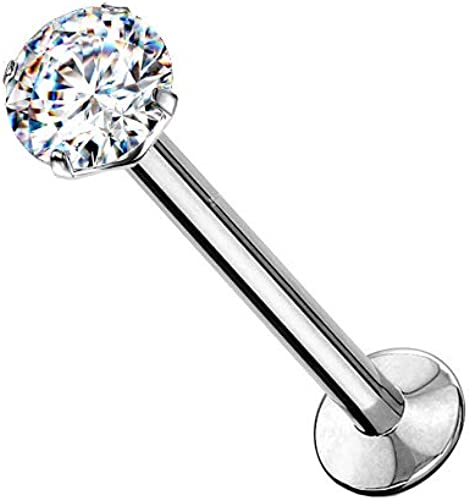
For more information read: L-Shaped Nose Rings Vs Screw Nose Stud
Nose Rings
Nose rings or hoops are another common choice for nose piercings. They provide a different aesthetic compared to studs and come in various sizes and styles.
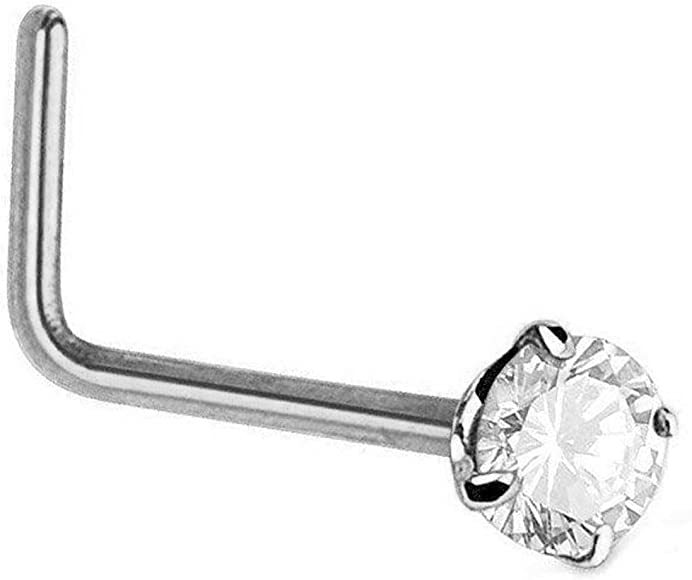
Captive Bead Rings
Captive bead rings (CBRs) are a type of hoop that has a small bead or gem that closes off the circle. They can be worn in several types of nose piercings, including septum and nostril piercings.

Barbells
Barbells, either straight or curved, are typically used for septum, nasallang, and Austin bar piercings. They consist of a straight or curved bar with balls or other decorative ends to hold the jewelry in place.
| Piercing Type | Description | Healing Time | Suitable Jewelry |
|---|---|---|---|
| Nostril Piercing | Single piercing through the curve of one side of the nostril. | 2-4 months | Studs, nose rings, CBRs |
| High Nostril Piercing | Similar to the nostril piercing but located higher up on the nasal bridge. | 3-4 months | Smaller studs, nose bones |
| Septum Piercing | Piercing through the nasal septum (not the cartilage but the sweet spot). | 6-8 weeks | CBRs, horseshoe barbells, septum clickers |
| Nasallang Piercing | Industrial piercing that passes through both nostrils and the septum. | 4-6 months | Straight barbell |
| Mantis Piercing | Horizontal piercing of the nose tip. | 3-4 months | Straight or curved barbell |
| Austin Bar Piercing | Vertical industrial piercing through both nostrils and septum. | 4-6 months | Straight barbell |
| Rhino Piercing | Vertical piercing through the tip of the nose. | 6-9 months | Curved barbell |
| Nose Bridge Piercing | Piercing through the skin of the nose bridge. | 8-10 weeks | Straight barbell |
Pros and Cons of Nose Piercings
Like any form of body modification, nose piercings come with their own set of pros and cons. Whether the benefits outweigh the downsides is a personal decision, so consider these points carefully before you take the plunge.
Pros of Nose Piercings
Personal Expression
A nose piercing can be a beautiful way to express your individuality and style. With so many jewelry options and piercing types available, you can create a look that truly represents you.
Cultural Significance
For many people, nose piercings hold cultural significance. They’re a part of various traditions around the world, providing a way to connect with one’s heritage.
Versatility
Nose piercings are highly versatile. You can choose from various piercing types and locations on the nose, and there’s a wide range of jewelry styles and materials to choose from.
Cons of Nose Piercings
Pain and Healing Time
While the pain is subjective and varies from person to person, nose piercings can be uncomfortable, especially if it’s a complex piercing like the Austin bar or nasallang. The healing times can also be lengthy, depending on the type of piercing.
Potential Health Risks
Nose piercings come with potential health risks such as infections, allergic reactions, or keloid formation. These risks can be minimized with proper aftercare and by getting pierced at a reputable studio.
Work and Social Acceptance
Though society has become more accepting, some workplaces and social situations still view piercings as unprofessional or inappropriate. It’s worth considering how a nose piercing might impact your professional and personal life.
Further Reading for Piercing Enthusiasts:
- How To Reopen A Closed Nose Piercing
- Which Side of My Nose Should I Pierce
- Nose Piercing Gauge
- Nose Ring According to Face Shape
FAQs
What is the correct side to pierce your nose?
What side should you pierce your nose? Well, there’s no single right answer. Some people might choose a side because of their culture or how they think it looks best. In India, people often pierce the left side. But in many Western countries, either side is okay. It’s important to choose a side that you feel most comfortable with and that complements your facial features.
How bad does a nose piercing hurt?
The pain experienced during a nose piercing can vary greatly from person to person, depending on individual pain tolerance. Most people describe the sensation as a quick pinch or a slight sting, followed by a mild ache. It’s usually less painful than a bite or a pinch. Remember, a professional piercer will aim to make the process as comfortable as possible for you.
What do I need to know before getting a nose piercing?
The healing time for most nose piercings ranges from four to eight weeks. To ensure a smooth recovery, refrain from fiddling with your piercing as this could potentially prolong the healing process. Be extra careful during this period, particularly avoiding:
Swimming in pools treated with chlorine. The chemicals can interfere with the healing process, increasing the risk of irritation or infection.
Additionally, maintaining good hygiene and following aftercare instructions from your piercer will contribute to a quicker, safer healing process.
Read: How to Cover Nose Piercing for Swimming
What does a nose piercing symbolize?
Nose piercings mean different things to different people. Some cultures see it as a sign of growing up or getting married. In Western cultures, it might be about showing your unique style or going against the norm.
For more information read: What Does A Nose Ring Mean On A Woman
What does a left nose piercing mean on a girl?
In some Indian cultures, people think the left nostril connects to the reproductive organs, so piercing it could make childbirth or periods less painful. But in Western cultures, it’s not about left or right – it’s about what the person likes.
Why do girls get their left nostril pierced?
Well, it could be because of cultural reasons or health beliefs. Or they might just like how it looks. Maybe their favorite star has one. Really, the choice of side is personal and doesn’t always mean something special.
What is the most painful type of nose piercing?
How long does a nose piercing take to heal?
Healing times vary based on piercing type: nostril piercings typically heal in 2-4 months, septum piercings in 6-8 weeks, and more complex piercings up to 6-9 months.
Can I sleep on my pierced nose?
Avoid sleeping on your new piercing until it’s fully healed to prevent irritation and slow healing.
Read: How to Sleep with a Nose Piercing
How often should I clean my nose piercing?
Clean your nose piercing twice a day during the healing process with saline solution.
What should I do if my nose piercing gets infected?
If your piercing appears infected, don’t remove the jewelry. Clean it regularly, avoid touching it unnecessarily, and consult a healthcare professional.
Conclusion
Getting a nose piercing can be an exciting way to express your individual style. By understanding the history, types, potential complications, and care procedures associated with nose piercings, you can make an informed decision about this popular body modification.
Remember, the most important thing is to find a reputable professional for the piercing procedure and to follow their aftercare instructions carefully. This ensures that your nose piercing experience will be as smooth, safe, and satisfying as possible.

Camila Luna is a passionate jewelry enthusiast and content creator at Miami Jewelry Co. With a focus on providing high-quality, Miami-style jewelry, Camila and her team specialize in a wide range of jewelry that includes bracelets, necklaces, earrings, and more
